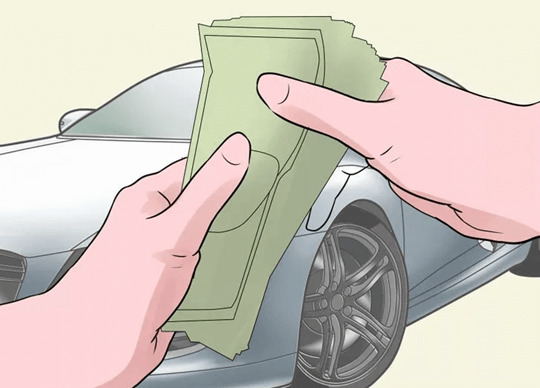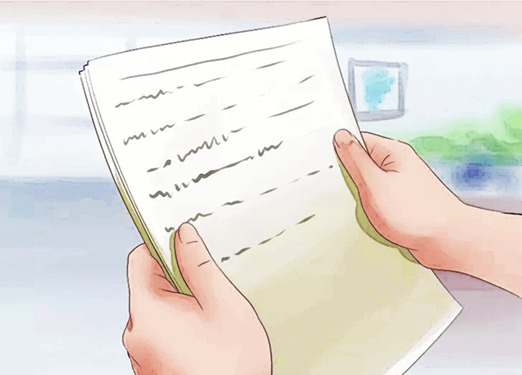#secondhandcarbuyingguide
Explore tagged Tumblr posts
Text
How To Buy a Used Car in India : Complete Guide
second hand car buying guide Last month, Siliguri resident Puneet Agarwal was looking to buy his first car. Armed with a modest ₹3 lakh budget, his search for a new vehicle couldn’t move beyond the usual entry-level cars like Maruti Alto, Renault Kwid, and the Hyundai Eon. The choices before the 30-year old marketing executive, living in a middle-tier town, were not much. A dejected Puneet was about to give up hope when he stumbled upon an online aggregator of used cars. Puneet is now the proud owner of a certified and spotless 2013 Maruti Suzuki Dzire. He drives sedan class to office.
Puneet is among the 4.2 million buyers fuelling the demand for used cars in India, which broke record sales last year, according to a CRISIL report. Fed by increasing customer aspirations, exponential growth in ecommerce and manufacturer-backed offers, the used car market is witnessing a never-before growth. The new to used car ratio, which was 1:1.2 even a few years back, has grown to 1:2.2 in recent times. It means that for every 10 new cars, 22 pre-owned cars are being bought.
But it’s the paranoia of being fleeced that often grips prospective buyers of used cars in India who in most cases have no idea of how to go ahead with buying such a vehicle. While some like Puneet are fortunate enough, many end up buying a car they don’t want, or worse still, one that’s defective and badly needs repairs. And for this large section of buyers, here’s our complete used car buying guide india.
Why should you buy a used car?
The moot question. Period. Here’s why you should.

Used Cars are Affordable :
Old car prices are usually much cheaper than brand new cars. While there’s always the apprehension of inheriting the problems left behind by the previous owner, all tensions can be ironed out if you buy a certified vehicle from a trusted vendor. If you dreamt of owning a better and bigger car but were constrained by budget, you can enjoy that now sans pulling your purse strings. More for less is the mantra behind buying used cars.
Used Cars have lower depreciation :
A new car depreciates at a much higher rate than used cars and that’s where you can gain. The highest depreciation occurs in the first year of a new car which is close to 40%, if used extensively. You don’t face a huge depreciation while buying a used car. Besides, there’s no tension regarding the chip in the paint, or parking lot scratches.
Used Cars require lower insurance :
Similar to financing, the age of a car affects the insurance rate as well. But for used cars, the insurance is usually much less.
Used Cars come with Warranty :
You get a warranty on your vehicle, while purchasing a used car from a genuine aggregator. But the warranty is limited and covers a fixed number of kilometers within a stipulated time.
Used Cars can be as good as New :
Gone are the days when second-hand cars meant rumbling jalopies with shabby interiors and worn-out exteriors. Today, you don’t need to sacrifice reliability while striking a deal for a pre-owned car. Certified used cars meet appearance, detailing, and mechanical standards.
Certified versus non-certified used cars
When it comes to used cars, nothing comes close to buying a certified vehicle. There’s always a concern of safety and reliability when you buy a used car. Honesty, is the last thing to expect, especially when you buy form a private seller. Several important service details could be entirely missing or fabricated. You may not know how rough a life the car had. The only way to guarantee peace of mind is with a third party warranty, pre-purchase inspection, or a service contract with a third party.
A certified used car, on the other hand, may cost more compared to a non-certified car. But you end up relieving the stress and uncertainty about the car you are about to buy. Certified used cars from established dealers pass inspection and only then they are put up for sale. This means you won’t be up for a surprise during safety and emissions tests or if you want to get the car checked by an expert.
Certified used cars are priced higher than the non-certified ones because they have to adhere to quality control. Most non-certified cars, at least in India, are sold on as-is-where-is basis. If you are hunting for a used car which is a pinch for every paisa you spend, then a certified pre-owned car won’t help much. But on the flipside, since certified used cars are sold by organised dealers, getting finance is easier and offers peace of mind.

How to go about the purchase
The real part of buying a used car. Here you go.
Select the car model :
Consider your needs, driving habits, and most importantly your budget. Study the various car models, their price, and technical specifications. It will help to narrow your choices. Settle on a car that meets your lifestyle. When you test drive some used cars from the same segment, it will help you to pick the correct one. For instance, you may go for a compact sedan car where you can chose between Maruti Suzuki Swift Dzire, Hyundai Xcent, Honda Amaze etc.

Explore all buying locations :
You can buy a used car from anywhere you like. These include car dealers, buying directly from the owner, and pre-owned cars showrooms. Insist on the pollution and tax clearance certificate. Try to get some background information on the dealer and references of satisfied customers. Inquire the reasons of selling the car, how it was used, and seek permission to inspect the vehicle by your mechanic. Inquire whether the car was involved in any accident and ensure that it’s in a stable condition. Remember, sale of cars directly from the owner doesn’t come with any service warranty.

a) Directly from owner :
Hunting for your perfect car from an individual owner is time-consuming and often follows a trial and error system. But it can land you the best deal because no middleman is involved. Yes, it’s laborious, but you can get a good vehicle at a lesser price. But honesty is the last thing you expect especially when you buy from a private seller. Take a mechanic along with you to inspect the car. In that way you won’t be sold a lemon.
b) Neighbourhood pre-owned dealer :
Buying from a used car dealer is much less cumbersome. But you must ensure that you are buying from the previous owner and the car has not been transferred in the dealer’s name. In that way, it becomes a third-hand car and the resale value is reduced. Inquire in this regard. While this saves the time to find the right car, you have to pay higher than buying directly from the seller. And if the dealer is not a reputed one, there’s a good chance that the car’s meter has been tampered or the documents could be forged. Even if the car looks all good to the naked eye, it wouldn’t hurt to get the car inspected by a mechanic or a third party.
c) Car companies or OEMs :
Almost all automobile manufacturers have their own used car outlets. While Maruti has TrueValue, Manhindra has FirstChoice and for Hyundai its First Advantage. Even premium luxury cars have opened their outlets to tap the burgeoning used car market. Mercedes has opened ProvenExclusivity, while BMW has Premium Selection. It’s probably the safest to buy from the car company because all checks and documentation are done by the company itself. Not only is the car thoroughly serviced, the company also offers warranty on the pre-owned vehicle. But the price you have to pay is the highest, compared to the other buying options.
d) Online classifieds :
Over the past few years, the option to buy used cars over the online exchange portals like Quickr and OLX has increased. You can find several pre-owned cars at one go, which saves much of your time and energy. But on the flipside, details of mileage and number of years disclosed by the owner may not be true. So you have to inspect the car before you sign on the dotted lines. Now that’s pretty wearisome if you have to run across the length and breadth of your city, mechanic in tow, inspecting cars. Only if somebody else could do that for you.
e) Web aggregators :
Riding the technology wave, web auto aggregators like CarTrade and CarDekho have jumped on to the used cars bandwagon. You can check out the cars available in your city on their website. Vehicles are checked for their quality though you may have to take your own mechanic to get the car inspected to your satisfaction.
f) Managed Online Marketplaces :
A few startups have also joined the ride, promising a completely end-to-end managed buying & selling experience to customers. You can discover pre-inspected used cars with their complete inspection reports on the website and book free test drives right there. Everything including conducting test drives, managing loan approval to vehicle delivery and post purchase paperwork is done by these managed marketplaces. But they may not be present across every city in India. Spinny and Truebil are one of these managed marketplaces.
Explore all payment options :
Most banks and NBFCs offer finance for used cars. Compare their duration of loan, interest and monthly payment options. Weigh them with your budget. Understand the actual price of the car, the amount of finance you need, and the total amount you have to pay including the initial payment, interest, and service charge. Many online used car aggregators also offer assistance in availing Loans for your used car purchase.

Take the car for a Test drive :
Perhaps the most important part of buying a used car. Insist on taking the car for a 4-5km test drive through various types of roads and observe the comfort level while driving. The engine should start instantly, the steering must not vibrate, and there should be no unusual sound or vibration while driving. A vibrating steering means there’s a front-end trouble. Apply the brakes properly at a speed of 30-50 kmph. The car should stop in a straight line. The mileage indicator and speedometer must work properly. The clutch must operate smoothly and while releasing, the vehicle should move steadily sans any jerk. Try out each gear and check whether the vehicle jumps out of the gear. At the end of it all, check for oil leaks from the gearbox or engine on a clean ground.

Read our article on “How To Test-Drive a Used Car“, to know about this in detail.
Do a Pre-Purchase Inspection of the Car :
1. Once you have zeroed in on your pre-owned car, it’s time to check relevant papers. First comes the year of registration. A car which has travelled 14,000-18,000km and is about 3-5 year old, is the best buy. Check the vehicle’s odometer to compare it to the manufacturing year. Remember, odometers can be tampered, whether electronic or mechanical.
2. Next, check the engine. It should start smoothly. A good engine won’t emit any black or blue smoke during acceleration.
3. Check for oil spouts from the exhaust.
4. You can bargain if the tyres are not up to the mark. Check for leaks. Tyres should be preferably tubeless so that you can drive to the nearest service point in case of a puncture.
5. The wheels should be properly aligned.
6. Check the shockers, suspension springs, bushings, and any sound from bearings.
7. Open the bonnet to check for acid wear and tear near the battery. It means the vehicle was not properly maintained by the owner. You can bargain at least ₹3,000 if the battery is close to expiry.
8. Check whether the audio system is in working condition.
9. Inspect all the electrical components like dippers, lightings, front and backlights, and reverse lights.
10. Check the AC. If possible, take the car up a slope to inspect whether the AC is functioning properly.

Read our article on “How to Do a Pre-Purchase Inspection When Buying a Used Car” for more on this.
Check for all relevant documents :
Check all papers properly before making the payment. Get the registration papers for transferring the vehicle ownership. The registration certificate also proves the ownership of the car.

a) Blue book :
This is actually the registration certificate. Inquire with the regional transport office (RTO) whether it’s genuine. The engine and chassis number should match with that on the registration papers. Check state of registration. It should be the state where you will use the car. The seller should do all necessary things for transferring the registration to the state of use.
b) Insurance :
Check for prior accident claims. The insurance certificate is must for transferring ownership.
c) Pollution :
The pollution under control (PUC) certificate is must to transfer the name.
d) Road tax :
The seller should hand over all road tax papers to you. You can bargain on the price of the car if the road tax is pending.
e) No objection certificate (NOC) :
This one is issued by the finance company. It should state that the financer has no claim on the car.
Get the car’s ownership paper transferred :
Once the car is selected, you have to transfer the ownership in your name. Here are the papers that you will require :

1. The registration certificate (RC) book, in original, needs to be submitted to the RTO office. If the same is hypothecated to any financier/bank, then the NOC stated above is required along with form number 35. NOCs are usually valid 60 days from the date of issue.
2. RTO form numbers 29 and 30 are the actual sale transfer forms. They need to be signed by both the buyer and seller in duplicates.
3. Imprint of the vehicle chassis number.
4. Notarised insurance papers, along with identity and address proof of both the seller and buyer. An affidavit may be required if the seller’s address doesn’t match with the proof of identity.
5. Notarised copy of your PAN card or form 60.
The better alternative
You must be having second thoughts on buying a used car with all the checking and paperwork involved. Besides, dubious agents flock RTO offices and unsuspecting buyers often fall prey to them.
Comes to the rescue – Spinny : an online end-to-end managed marketplace for Used Cars.
Spinny was launched as an end-to-end used car marketplace and has become the preferred online destination for pre-owned vehicles. It’s a one-stop technology driven platform that puts customer convenience at the centre of the whole buying & selling process.
Customers can browse various models of Fully Inspected Used Cars, without worrying about the car’s condition and also avail value added services like- Assisted Test Drives, Easy Finance Option starting at 13% interest rate and 1 year Optional Warranty.
The expert inspection team at Spinny takes the responsibility to ensure that all the used cars put up for sale on the website are among the best in the market. A comprehensive 200-point check is carried out on every pre-owned car before the same is listed on the website. Cars that have suffered major structural damages, have tampered metres, or have no proper service record are instantly rejected. This was the complete information about second hand car buying guide in india.
Spinny has a roster of more than 7,000 fully inspected used cars in Delhi-NCR & Bangalore from all leading brands in all price ranges.
Spinny has also served more than 5,000 #HappySpinnyCustomers so far. 🙂
0 notes